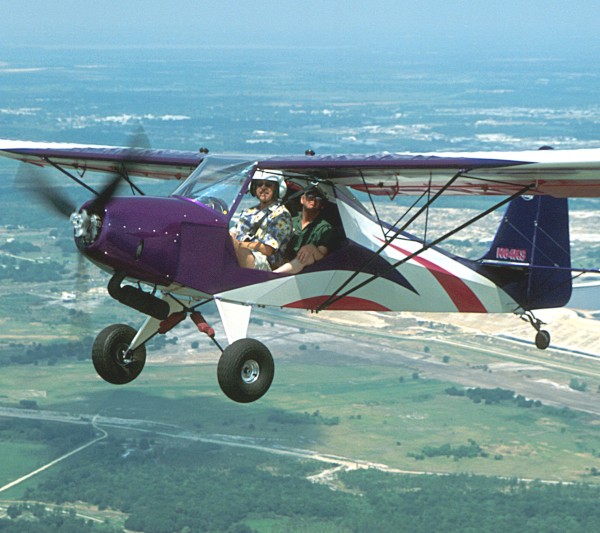
Part-Time 2-Seater Like the Kolb FireStar II, the Sky Raider II has a second seat for occasional use – but not for flight instruction. After flying with 165-pound Grant Rappe – a long-time Sky Raider pilot – as my volunteer rear seat passenger, I feel that two big fellows won’t fit. And even with small rear-seat occupants, you probably won’t want to fly for too long. Nonetheless, if you want a ride-along jump seat for occasional use, but you truly prefer single-seat handling and you don’t want to pay a bundle extra for the second seat and dual controls, the Sky Raider II might be for you. Admittedly you have other choices in this vein. French trike maker Air Création addressed it with their Buggy. Here’s a 2-seat aircraft, which the manufacturer says is mainly intended for single-place operation. The New Kolb Aircraft Company has two models that can do this (the FireStar II and Slingshot II) and of course, the very similar Rocky Mountain Wings Ridge Runner Model II also works much like a Sky Raider II.











